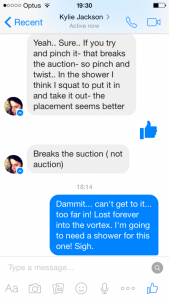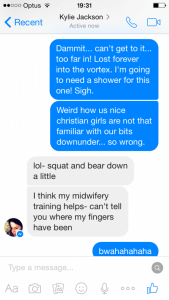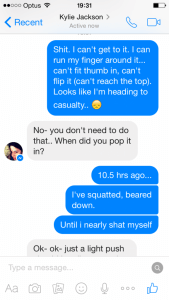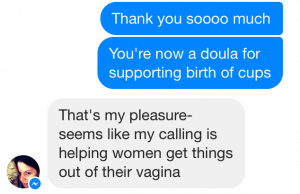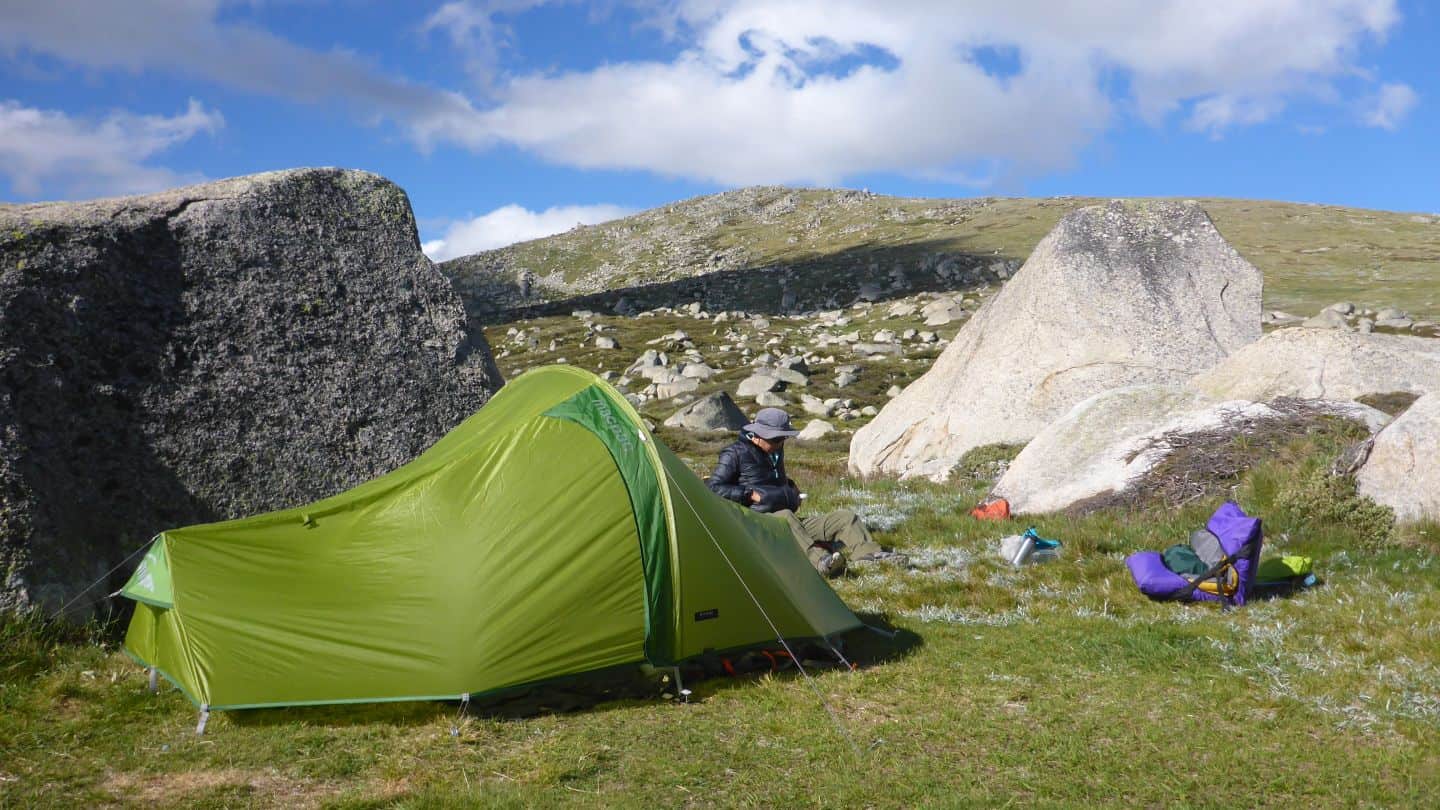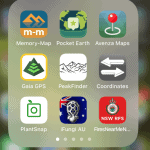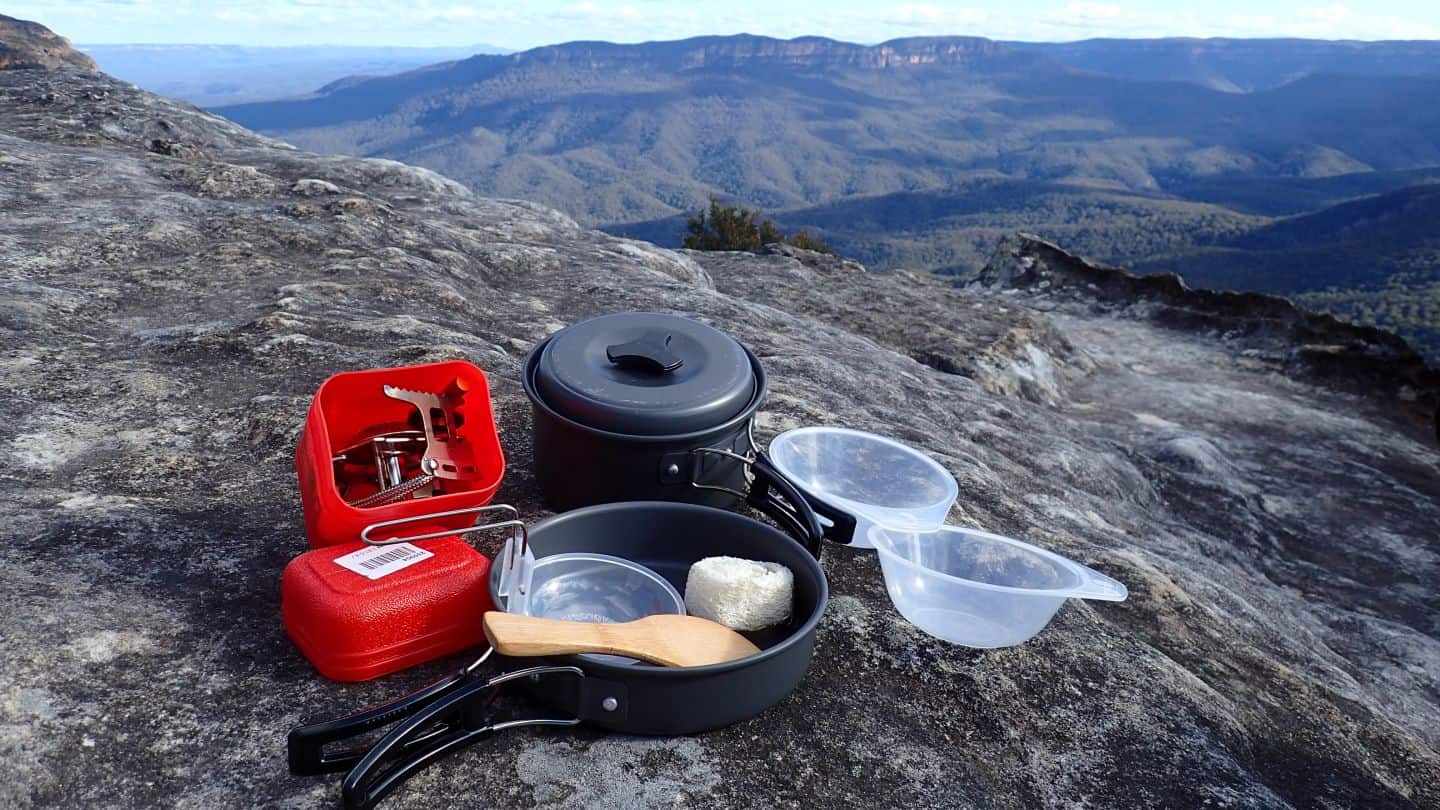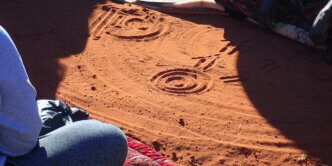One of the annoying little things about being a woman who loves the outdoors, is deciding how to manage your period out in the wilderness.
I say little things because in the scheme of things, once you’re out there, breathing clean air, hauling butt up a ridgeline, the hope is that having the painters in or surfing the crimson wave isn’t going to affect your experience. Well, that’s the hope isn’t it?
For some women though, who have a tricky time of it all in their usual environment, heading off into the bush just adds another layer of complexity and perhaps a reason to not go out at all.
That would be a shame to base your decision to go hiking (or any other adventurous pursuit) or not, simply because you’ve got your period.
Before I wrote my earlier post and video on How to Deal with Periods in the Bush, I’d never heard about menstrual cups before. I heard back from a few of you who told me about cups and said how they’d never use anything else. With all that encouragement, I knew this was something I needed to try out.
They’ve traditionally never been that popular in Australia, however now that there is a local Aussie manufacturer selling TGA (Therapeutic Goods Administration Australia) approved cups, I was keen to give the JuJu Cup a go.
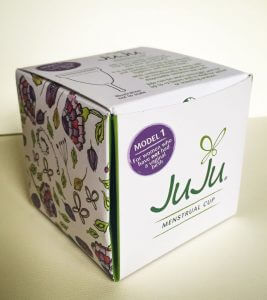 When the cute little box arrived, along with it’s handy satin little baggie (to keep it nice n’ clean between periods) I’ve got to say, I spent a fair bit of time just looking at it.
When the cute little box arrived, along with it’s handy satin little baggie (to keep it nice n’ clean between periods) I’ve got to say, I spent a fair bit of time just looking at it.
I was suddenly taken back to that time as a 14 yr old, sitting (for like, forever) on the loo in my family home and reading, then re-reading the instructions on inserting tampons.
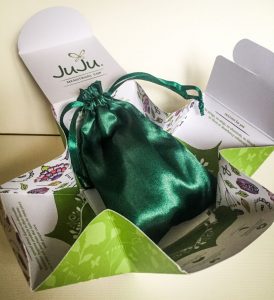 Quivering at the thought and convinced I’d die a painful death from Toxic Shock Syndrome, I put aside my fears as my desire to go dancing all night with friends at a band I was a groupie of at the time, took over.
Quivering at the thought and convinced I’d die a painful death from Toxic Shock Syndrome, I put aside my fears as my desire to go dancing all night with friends at a band I was a groupie of at the time, took over.
Cut back to June 2015 and here I was again, sitting on the loo reading, then re-reading, the instructions for a JuJu. Firstly, nice job on the branding and design. Much friendlier than the traditional blue text on white and cold clinical/medical approach of most tampon manufacturers. I was easily distracted from the task at hand by the story of where the name, JuJu, came from.
“The word juju travels back to West African rituals of magic and power. Juju is believed to cure ailments of mind and body and can be increased with selfless acts and good deeds. Every one of us has the ability to use our energy, our juju, to heal our surroundings and ourselves.”
At this point in time, poised for my first attempt, little did I know how pertinent these words were and how much they would ring true for me by the end of that cycle.
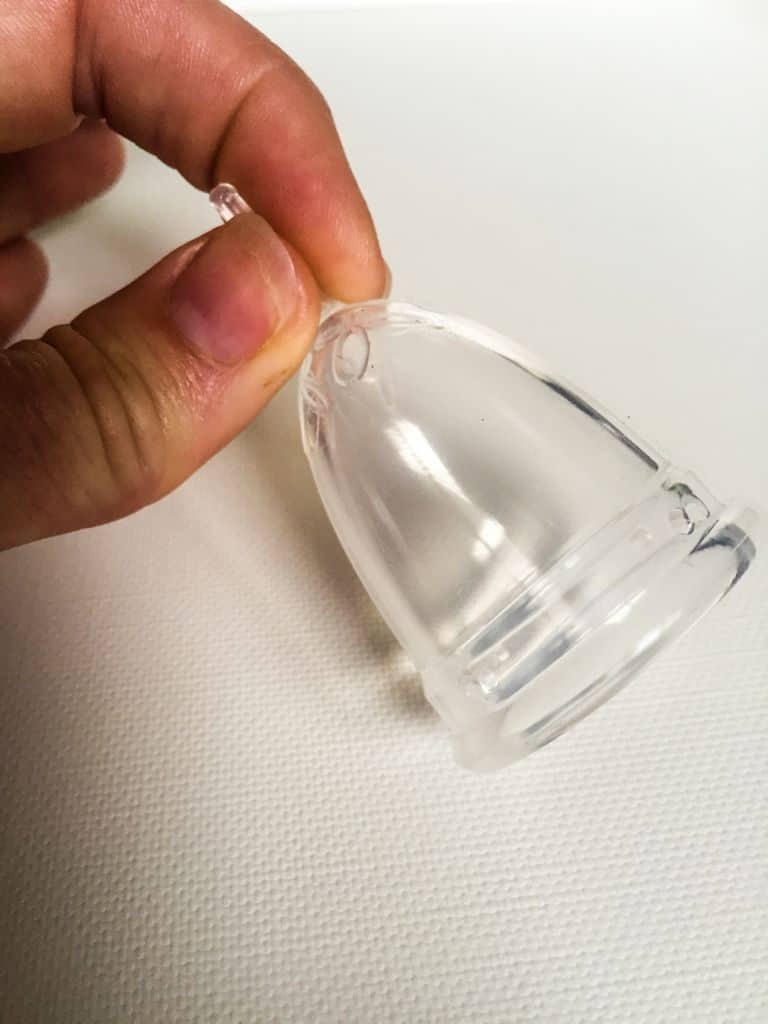 Speaking of cycles, the lovely Brenda from JuJu asked that I give it 3 cycles before writing up this roadtest review. To be honest, they’re right and that is my first bit of advice to anyone looking to start using a menstrual cup. It takes time. Be persistent, don’t expect to get it right straight away.
Speaking of cycles, the lovely Brenda from JuJu asked that I give it 3 cycles before writing up this roadtest review. To be honest, they’re right and that is my first bit of advice to anyone looking to start using a menstrual cup. It takes time. Be persistent, don’t expect to get it right straight away.
However, in our ‘instant’ society that we live in, I confess that it can be easy to become frustrated when something doesn’t happen or work for us immediately. I guess this is a nod to one of the things about menstrual cups that sets them apart from the instant and invisible nature of tampons and links into the whole JuJu name and concept.
That thing about the mysterious and ancient connection that bleeding gives me to every woman who’s ever lived. The linking to all that stuff around feminine strength and our ability to grow and nurture life within us. The monthly reminder that we have the ability to bring forth life, in all it’s messy, bloody, painful and earthy ways.
If you’ve stopped reading already, well, happy days. If you’re curious about where I’m going with this, stick with me.
I thought I was testing out a feminine hygiene product. A surgical grade, flexible cup of silicone that would catch my icky goo for up to 10 hours (as opposed to a tampons 4hrs) and allow me to spend time in the wilderness, not worrying about hygiene, leakage and waste. Turns out… this roadtest was about become about a whole lot more.
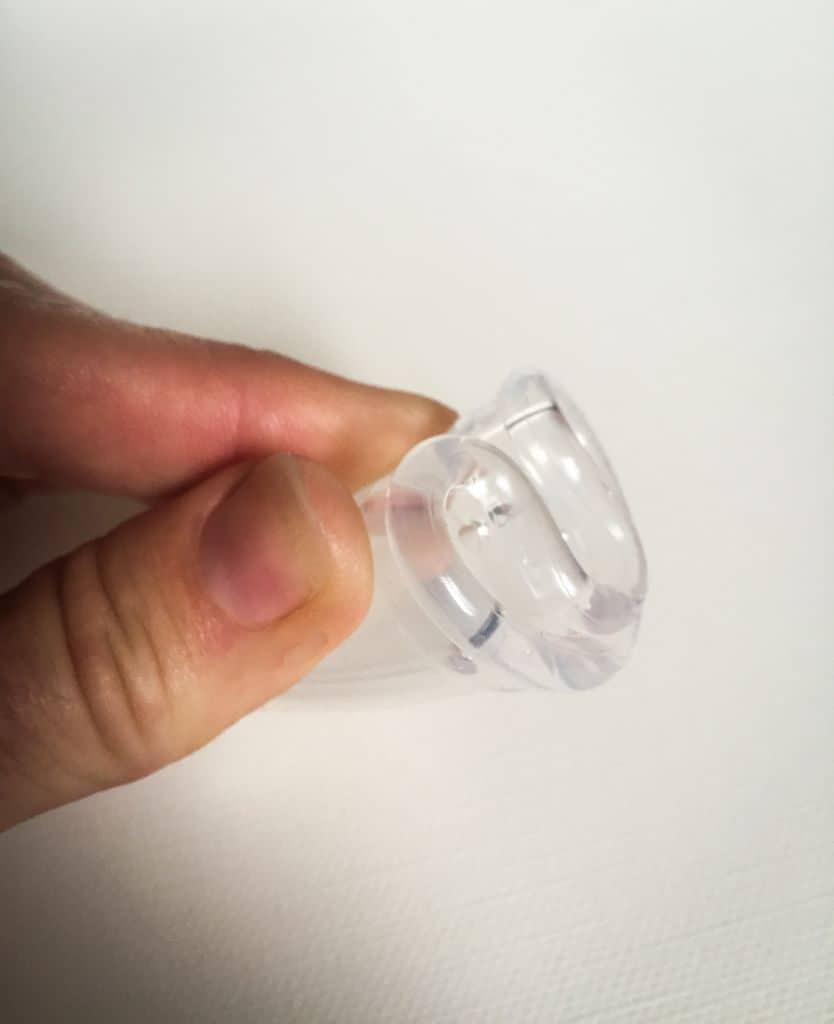
Back to the bathroom…
Read instructions again. Re-read them.
I want this to work. I really want this to work.
There are so many reasons why these things make sense, not just for the practical and financial side of things ($55 AUD), ie. you only need to have 1 or 2 and don’t have to buy a new one each month, but environmentally. Whether you’re a flusher or a trasher, you are still creating landfill and adding to your waste pile over the years – about 10,500 pads or tampons over our lifetime. I’ve been trying to live a consciously simpler life over the past couple of years, with less clutter and less stuff – to be less disposable. I feel as though cups fit well into this ethos but not only that, the experience of using them helped me get in touch with my icky goo and realise that it ain’t icky at all. It’s actually pretty amazing.
What is it with society that it has worked so hard to hide all traces of women’s blood and leads us to believe that periods are dirty and something to be embarrassed about and is certainly not to be spoken about. I know that some people believe the line, “if men had periods it would be different,” but I’m not sure I agree.
Now if you’re wondering where all this is going, it’s about letting you know the types of things to expect if you decide to give menstrual cups a go.
Firstly, you will get in touch with your blood and become more familiar with your body than you may ever have been before. I can’t explain more on this without telling you a bit about myself and my upbringing.
My experience of growing up was of a loving home. It just also happened to be very traditional in it’s conservative christian doctrine, where I was taught that sex outside of marriage and exploring your own body was wrong, simply because that’s the world that my parents were also raised in – it was all they knew. I don’t regret my past and my parents decisions at all, they did what they believe was right, but as a consequence I was somewhat of a late bloomer in understanding what goes on, ‘down there’.
Using menstrual cups forces you and your bits to become one, which leads me to wonder if they’re suitable for girls who’ve only just started their period… then again, maybe it’s a great way to help educate them on how we work. They’d learn pretty quickly that none of us are built like the diagrams inside a tampon box – in fact – we’re much more amazing. [Oh and in case you’re wondering, I’ve never had a baby… girlfriends have told me that childbirth was their lesson in their bodies and taught them everything they knew.]
The other thing that cups do, is they help you get over any ick factor that you might have had about your period. Tampons are a great way of making your period disappear and flushed away. You don’t ever really understand how much you bleed and in one sense, help perpetuate the myth that bleeding and periods are somehow dirty and something to be ashamed of.
With a cup, you actually see your blood, pooled inside the cup when you remove it. For me, it was a bit of a light bulb moment, “Ah, that’s how much I lose.” Ah, got it.
So, back to me sitting on the loo…
All went according to plan on the instructions and I left the bathroom feeling quite proud of myself. Kinda like I did when I was 14.
Day 1 was a success with 10 hrs of issue (ahem) free use. It was when I came to take it out again that everything seemed to go a bit pear shaped.
Thankfully, I have an amazing friend Kylie, who is not only a cup user herself, but a Doula who has had some midwifery training.
She sent me the link to a hysterical Buzzfeed post that helped me relax, before offering some sage advice to help me get it out. Now, 3 months on, I find our FB Messenger conversation freakin’ hilarious… at the time… not so much.
Then after about another 15 mins of various attempts and techniques… success!
So, now that I’ve shared WAY more than I ever wanted to through this blog, here’s my
13 top tips for using a menstrual cup:
- give it at least 3 cycles and be gentle and patient on yourself as your learn
- when you’re out in an urban environment or at work, try to find a public loo that has a handbasin in it, disabled ones often do (just watch for disabled toilet guilt)
- wear a panty (hate that word!) liner whilst learning. I had a few mishaps.
- don’t think of it like a tampon – it doesn’t go in that far. If you do, it will not only probably leak, but you may have trouble getting it out
- don’t freak out if you can’t get it out at first… you won’t die and probably don’t need to go to hospital… have a glass of wine and try again in 5 mins.
- expect to play hide and seek if you try to take it out first thing in the morning after waking up. Walk around a bit and give it a while to move down again.
- When you rinse it out under the tap, be careful to turn the tap on gently first before bringing the cup underneath the water on an angle… otherwise, you might just cover your bathroom and yourself in a bloody, watery explosion. Nice!
- Wilderness: carry extra water (I pop in an extra 600ml water bottle) that is reserved for changing, washing and hand cleaning
- Wilderness: dig a cat hole (as though you’re doing #2) to bury the blood (sheesh, that sounds like some type of ancient druid rite!)
- Wilderness: You may want to change it wearing disposable gloves (that you then need to ziploc bag and carry out) to save on the amount of water you need for washing your hands
- Wilderness: If you’re still learning, allow yourself more time at the pit-stop along the trail
- Wilderness: The great news is that I did last 10hrs before needing to change, which means that during a full day hiking (leaving camp at 8am and arriving into the next campsite at 5pm) I didn’t need to think about it during the day… yay.
- Wilderness: Don’t forget wet-wipes and hand sanitiser… remember, this can be a messy business
As I said earlier, I really want to make this work. I really want to be able to say, ‘Why yes! I use a cup.’ And after 3 months, a few laughs, a few mishaps and a few tears, I can now say that, along with having a far greater understanding, awareness and connection to the amazing world ‘down there.’ [cue trolls].
So yes, I did get sent a freebee piece of medical grade silicone to test, but what I ended up with, was actually a whole lot more.

